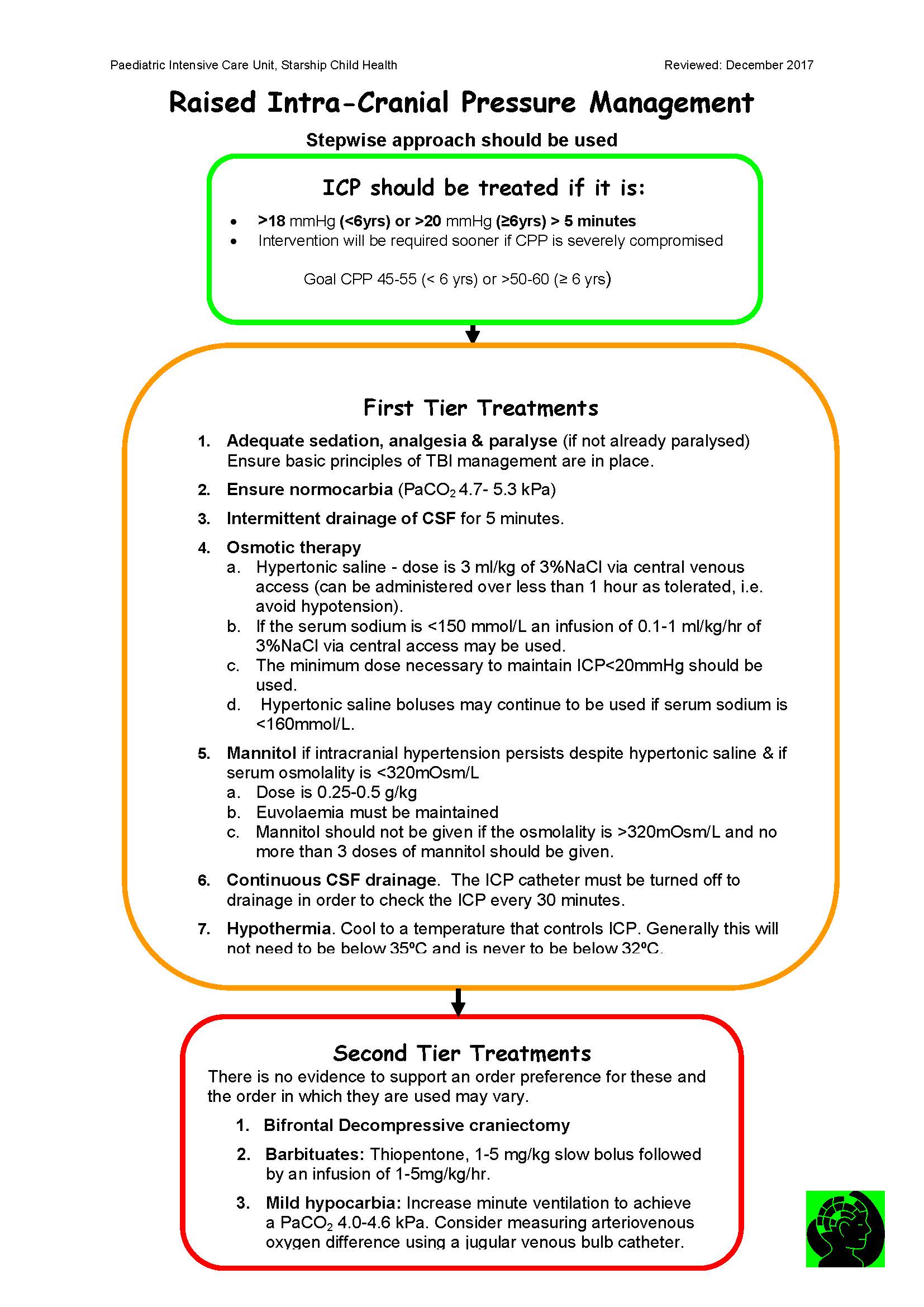Exemplary Tips About How To Treat Intracranial Pressure

A variety of therapies are used in clinical practice, including weight reduction, carbonic anhydrase inhibitors (acetazolamide), diuretics (furosemide), cerebrospinal fluid shunting, optic nerve sheath fenestration, and, most recently, venous sinus stenting.
How to treat intracranial pressure. Discussion visual alterations and headache are the two main symptoms of idiopathic intracranial hypertension, although additional features including cranial nerve palsies, cognitive deficits, olfactory deficits and tinnitus are not uncommon. The headache associated with idiopathic intracranial hypertension frequently has a migrainous. When surgery is necessary if the brain is being squeezed by something in the skull that doesn’t belong there, like an abscess or tumor, removing it can be the answer.
For intracranial hypertension refractory to initial medical management, barbiturate coma, hypothermia, or decompressive craniectomy should be considered. Without proper treatment, this condition may lead to seizure. Normal csf pressure varies by age.
Acute ih can be treated by addressing the underlying cause of the pressure buildup. Treatments for idiopathic intracranial hypertension (ih) can include: The immediate aim of treatment is to bring down the pressure on their brain tissue, which helps to reduce the risk of brain damage.
Idiopathic intracranial hypertension (iih) is increased pressure around your brain. These are the most common symptoms of increased icp: Intracranial hypertension is a spectrum of neurological disorders where cerebrospinal fluid (csf) pressure within the skull is elevated.
Get a lumbar puncture to check your icp. Elevated icp may complicate trauma, central nervous system (cns) tumors, hydrocephalus, hepatic encephalopathy, and impaired cns venous outflow ( table 1) [ 1 ]. This can be done in a number of ways, including:
There are well established methods for the. Stroke what are the symptoms of increased icp? It can arise as a consequence of intracranial mass lesions, disorders of cerebrospinal fluid (csf) circulation, and more diffuse intracranial pathological processes.
Medical management of increased intracranial pressure should include sedation, drainage of cerebrospinal fluid, and osmotherapy with either mannitol or hypertonic saline. Treatments may include hypothermia (to cool the body and reduce swelling), the anesthetic propofol to suppress metabolism, or a surgery called a craniectomy to relieve brain pressure. Medical options for treating elevated icp include head of bed elevation, iv mannitol, hypertonic saline, transient hyperventilation, barbiturates, and, if icp remains refractory, sedation, endotracheal intubation, mechanical ventilation, and neuromuscular paralysis.
Overview what is idiopathic intracranial hypertension? Which treatments are safe and effective to reduce intracranial pressure following severe traumatic brain injury? Mit and boston children’s hospital researchers have devised a minimally invasive way to monitor intracranial pressure in patients suffering from traumatic brain injuries or infectious diseases.
Another tactic is to insert a shunt in the brain through which excess csf can drain. Increase in brain volume generalized swelling of the brain or cerebral edema from a variety of causes such as trauma, ischemia, hyperammonemia, uremic encephalopathy, and hyponatremia Placing a shunt through a small hole in the skull or in the spinal cord to drain excess cerebrospinal fluid using medications like mannitol and hypertonic saline to lower pressure sedation to reduce anxiety and neurological responses removing part of.
Etiology the causes of increased intracranial pressure (icp) can be divided based on the intracerebral components causing elevated pressures: Introduction elevated intracranial pressure (icp) is a potentially devastating complication of neurologic injury. Treatments for idiopathic intracranial hypertension.


















